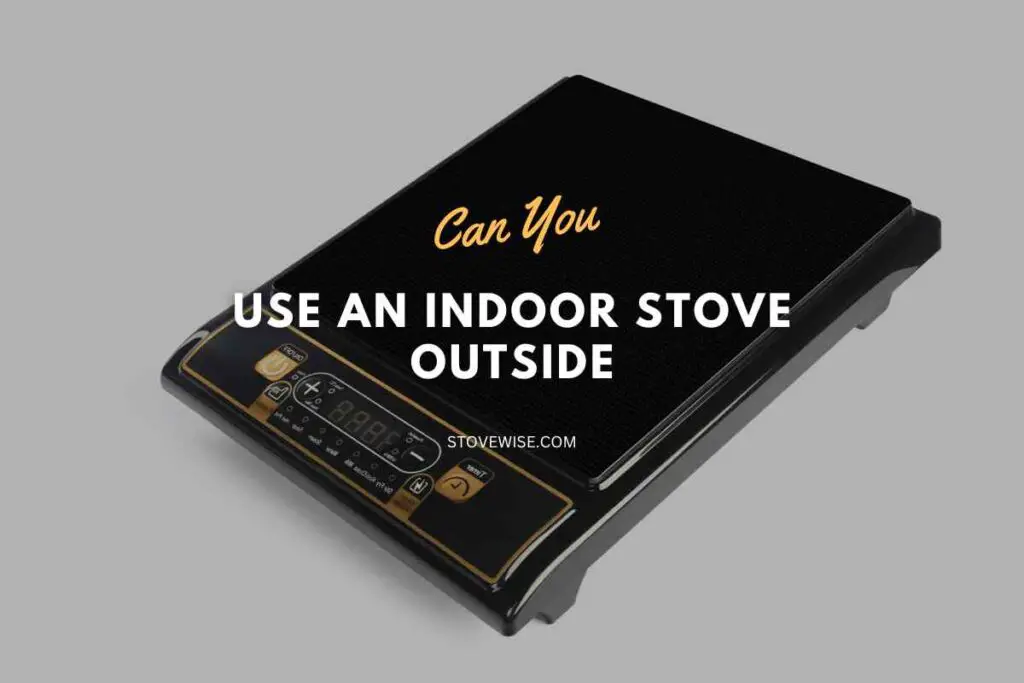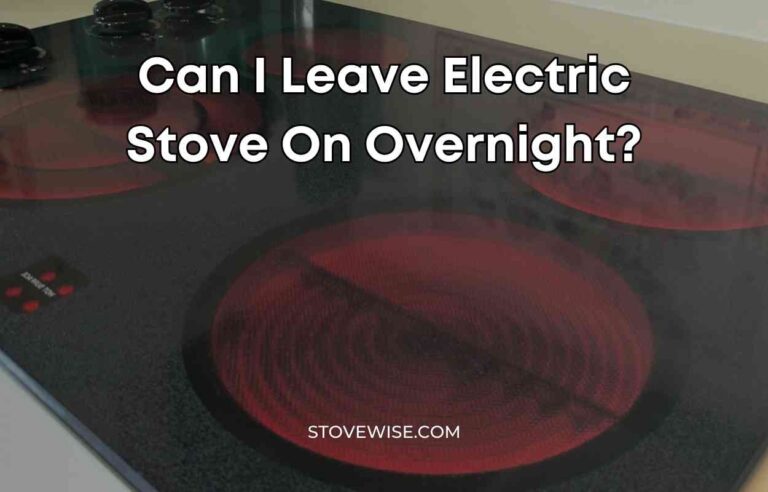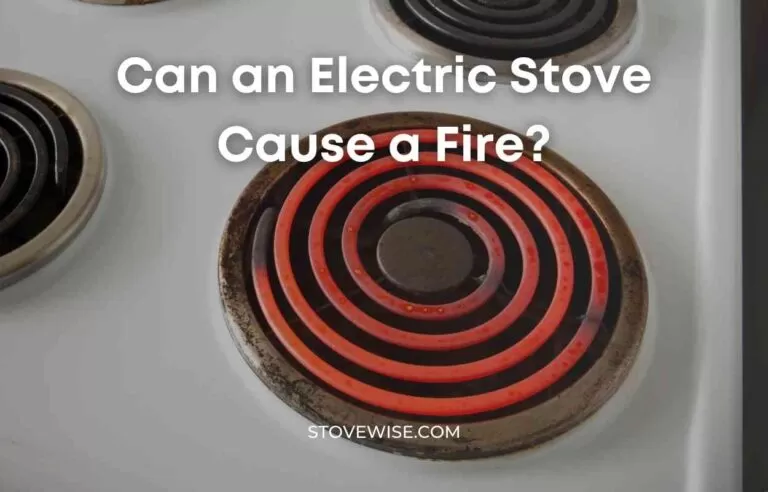Can You Use an Indoor Stove Outside?
If you’re an avid home cook, you may have wondered whether you can use your indoor stove outside. After all, there’s nothing quite like cooking up a storm in the great outdoors. But, can you use an indoor stove outside?
Using an indoor stove outside is not recommended due to safety concerns and potential malfunction. Indoor stoves are not designed for outdoor environments, posing fire hazards and increased vulnerability to damage from the elements.
Moreover, indoor stoves emit carbon monoxide, a toxic gas harmful in poorly ventilated areas, which is difficult to achieve outdoors.
For outdoor cooking, it is advisable to utilize stoves specifically designed for such purposes, ensuring safety, durability and reduced carbon monoxide production.

Contents
Can You Use an Indoor Stove Outside?
Due to safety and practical concerns, it is strongly discouraged to use an interior stove outdoors. Indoor burners are specifically designed for use in controlled environments with adequate ventilation. When used outside, these burners pose significant dangers.
They may malfunction due to exposure to outdoor elements such as wind, rain, or extreme temperatures, which could result in gas leakage or other dangers. In addition, outdoor conditions can affect the heat distribution, flame stability, and efficacy of an indoor stove.
Emissions of carbon monoxide, a hazardous gas produced by the combustion of fuel in indoor stoves, are also a major concern. It is difficult to ensure adequate ventilation in an outdoor setting, which could contribute to carbon monoxide buildup and subsequent health risks.
In order to resolve these issues, it is necessary to utilize stoves designed specifically for outdoor use. These outdoor burners are made from materials that can withstand the elements and are equipped with safety features to prevent accidents.
Additionally, they are designed to provide improved thermal management and ventilation, thereby reducing the risk of carbon monoxide exposure.
Pros and Cons of Using an Indoor Stove Outside
Before we dive into the specifics of using an indoor stove outside, let’s take a look at the pros and cons of this approach.
Pros:
- Convenience: If you’re used to cooking on your indoor stove, it can be a lot more convenient to use this same appliance outside rather than investing in a separate outdoor cooking appliance.
- Familiarity: Cooking on your indoor stove outside can be a great way to maintain the same level of familiarity and comfort that you’re used to in your indoor kitchen.
- Versatility: An indoor stove can be used to cook a wide range of dishes, making it a versatile option for outdoor cooking.
Cons:
- Safety: Using an indoor stove outside can pose safety risks, especially if you’re not careful about where you place the stove and how you use it.
- Damage: Outdoor conditions can be harsh on indoor appliances, so using your indoor stove outside can result in damage to the appliance.
- Limited mobility: An indoor stove is not designed for outdoor use, so it may not be as mobile or easy to move around outside as a dedicated outdoor cooking appliance.
Tips for Using an Indoor Stove Outside
If you’ve decided to use your indoor stove outside, there are some important safety considerations to keep in mind. Here are some tips to help you cook safely in the great outdoors:
1. Choose a Safe Location
When using an indoor stove outside, it’s important to choose a safe location. Make sure the area is well-ventilated and away from any flammable materials. Avoid using your stove on windy days or in areas with high fire risk.
2. Use a Sturdy Surface
Make sure your stove is placed on a sturdy, level surface. Avoid using a wobbly table or uneven ground, as this can increase the risk of accidents and spills.
3. Keep Your Stove Clean
Regularly clean your stove to prevent grease buildup, which can be a fire hazard. Use a damp cloth to wipe down the stove after each use, and make sure to clean any spills or splatters immediately.
4. Use the Right Cookware
Using the right cookware is important when cooking on an indoor stove outside. Make sure to use pots and pans that are designed for use on your specific stove, and avoid using damaged or warped cookware.
5. Keep a Fire Extinguisher Nearby
In case of an emergency, it’s important to keep a fire extinguisher nearby when using an indoor stove outside. Make sure you know how to use the extinguisher before you start cooking.
6. Monitor Your Cooking
When cooking on an indoor stove outside, it’s important to keep a close eye on your food. Don’t leave the stove unattended, and make sure to adjust the heat as needed to prevent burning or overheating.
Alternatives to Using an Indoor Stove Outside
If you’re not comfortable using your indoor stove outside, there are plenty of alternative options for outdoor cooking. Here are some popular alternatives:
- Outdoor grills: A dedicated outdoor grill is a great option for cooking in the great outdoors. Charcoal, gas, and electric grills are all available, and each has its own advantages and disadvantages.
- Portable stoves: Portable stoves are designed for outdoor use and are a great option for camping, picnics, and other outdoor activities. They’re lightweight and easy to transport, making them a convenient choice for outdoor cooking.
- Dutch ovens: A Dutch oven is a heavy, cast-iron pot that can be used for a wide range of outdoor cooking applications. They’re great for stews, soups, and even baking bread.
Conclusion
Using an indoor stove outside can be a convenient and familiar option for outdoor cooking, but it’s important to take safety precautions to prevent accidents and damage to your appliance.
If you’re not comfortable using your indoor stove outside, there are plenty of alternative options available, including outdoor grills, portable stoves, and Dutch ovens. Whatever option you choose, make sure to follow safety guidelines and enjoy the great outdoors!






